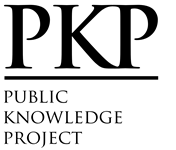The consumption limit of oyster (Crassostrea cucullata born) is safe based on the heavy metal contents of Pb, Cu and Zn in the estuary of Los Kala River, Lhokseumawe City, Aceh Province
Abstract
Survey of heavy metal content in oysters (C. cucullata) in the waters of the Los Kala River estuary in June-July 2018. Heavy metal content analysis was carried out at the Riau KLHK Laboratory with Atomic Abortion Spectrophotometer Shimadzu AA-7000. The results showed that the heavy metal content in oysters (C. cucullata) was Pb (14,454 µg/g), Cu (103,778 µg/g), Cu (111,611 µg/g). The highest Pb content was found at Station II (16.0388 µg/g), the highest i Cu content was found at Station V (170.2445 µg/g), and the highest Zn content was found at Station II (128.7621 µg/g). In general calculations of Provisional Tolerable Weekly Intake(PTWI) set by FAO/WHO suggest that for health and to avoid the effects of heavy metals, consumption of oysters (C. cucullata) per person from the estuary of Los Kala River does not exceed 1.09 kg/week (based on Pb concentration), 21, 25 kg/week (based on Cu concentration) and 19.76 kg/week (based on Zn concentration).
Keywords: C. cucullata, estuary of Los Kala River, Heavy metalcontent, PTWIFull Text:
PDFReferences
Dahuri R., Rais J., Ginting Putra S., Sitepu M.J. (2013). Pengelolaan Sumber Daya Pesisir Secara Terpadu. PT. Balai Pustaka (Persero). Jakarta Timur.
Ditjen POM (Direktorat Jenderal Pengawasan Obat dan Makanan), 1989. Lampiran Surat Keputusan Nomor 03725/B/SK/VII/1989 Tentang Batas Maksimum Cemaran Logam Berat Makanan.
FAO (Food and Agriculture Organization), 1983. Compilation of legal limits for hazardous substances in fish and fishery products, FAO Fishery Circ. 464: 5-100.
GESAMP (Group of Expert on the Scientific Aspect of Marine Pollution), 1985.Marine Pollution Imlication of the Ocean Energy Development.Report and Studies, Rome. 43 p.
Hamzah F, Setiawan A, 2010.Akumulasi logam berat Pb, Cu, dan Zn di hutan mangrove Muara Angke, Jakarta Utara. Jurnal Ilmu dan Teknologi Kelautan Tropis 2(2): 41-52.
Hynes, H. B. N. 1972. The Ecology of Runing Water.University of Toronto Press. Toronto.
Kantor Kementerian Negara Lingkungan Hidup, 2004. Keputusan Menteri Negara Lingkungan Hidup No. Kep-51/2004 Tentang Pedoman Penetapan Baku Mutu Air Laut, Kantor Menteri Negara Lingkungan Hidup, Jakarta.
Mance, G. 1987. Pollution Threat of Heavy Metals in Aquatic Environments. Elsevier Applied Science. England. 372 hal
Nontji, A., 2002. Laut Nusantara. Djambatan, Jakarta. 367 hal.
Palar, H., 2004. Pencemaran dan Toksikologi Logam Berat. Rineka Cipta, Jakarta. 152 hal.
Razak, A. 1991. Statistik Bidang Pendidikan Fakultas Keguruan dan Ilmu Pendidikan Universitas Riau, Riau.
Razak, H. 1987. Petunjuk cara pengambilan contoh dan metode analisis logam berat. Jakarta. LON– LIPI.
Riduwan, A. Rusyana dan Enas, 2011. Cara Mudah Belajar SPSS 17.0 dan Aplikasi Statistik Penelitian. Alfabeta, Bandung. 212 hal.
Rochyatun, E., Kaisupy, T dan Rozak, A., 2006.Distribusi Logam Berat dalam air dan Sedimen di Perairan Muara Sungai Cisadane. Jurnal Makara 10(1): 35-40.
Sugiyono, 2011.Statistika untuk Penelitian. Alfabeta, Bandung. 390 hal.
Suhardi, 2012. Analisis Kandungan Logam Berat Pb, Cu dan Zn pada Air, sedimen dan Biota di Perairan Kolong Laut Kecamatan Karimun kabupaten Karimun Provinsi Kepulauan Riau. Tesis.Program Studi Ilmu Lingkungan Universitas Riau. Riau. (Tidak diterbitkan).
Ubbe, U. 1992. Analisis Limbah Logam Berat yang Terdistribusi di Muara Sungai Tallo Ujung Pandang. Lembaga Penelitian Universitas Hasanuddin. Ujung Pandang. 45 hal (tidak diterbitkan).
Waldichuck, M., 1974. Some biological concern in metal pollution in F.S. Venverg and Venberg (ads). Pollution and Physioplogy of Marine Organism. London. P1-15.
Welch, P. S. 1952. Limnology.Second edition. McGraw Hill International Book Company. New York.
WHO (World Health Organization), 1989. WHO Technical Report Series No. 776, Geneva.
Yap, C.K., M.S. Choh, F.B. Edward A. Ismail and S.G. Tan. 2006. Comparison of Heavy Metal Concentration in Surface Sediment of TanjungPiai Wetland with other Sites Receiving Anthropogenic inputs along Southwestern Coast of Peninsular Malaysia. Wetland Science 4(1): 48-57.
Yap, C.K., A. Ismail, S.G. Tan and Umar. 2002. Consentration of Cu and Pb in Offshore and Intertidal Sediments of the West Coast of Peninsular Malaysia. Journal of Environment International (20): 267-479.
DOI: https://doi.org/10.29103/aa.v8i3.5857
 Article Metrics
Article Metrics
 Abstract Views : 340 times
Abstract Views : 340 times
Refbacks
- There are currently no refbacks.
Copyright (c) Acta Aquatica: Aquatic Sciences Journal

This work is licensed under a Creative Commons Attribution 4.0 International License.









